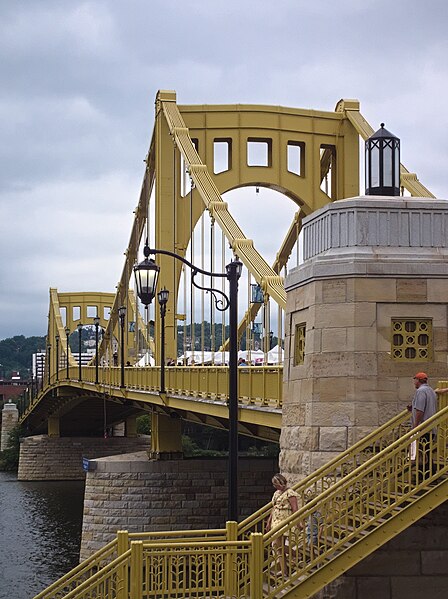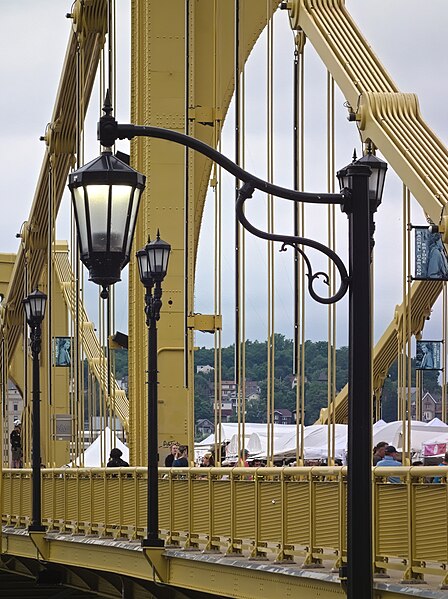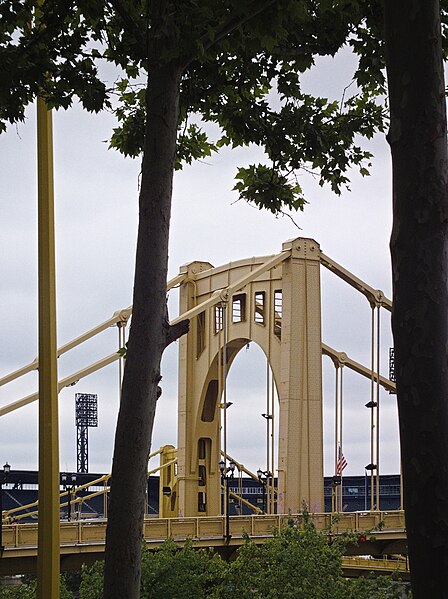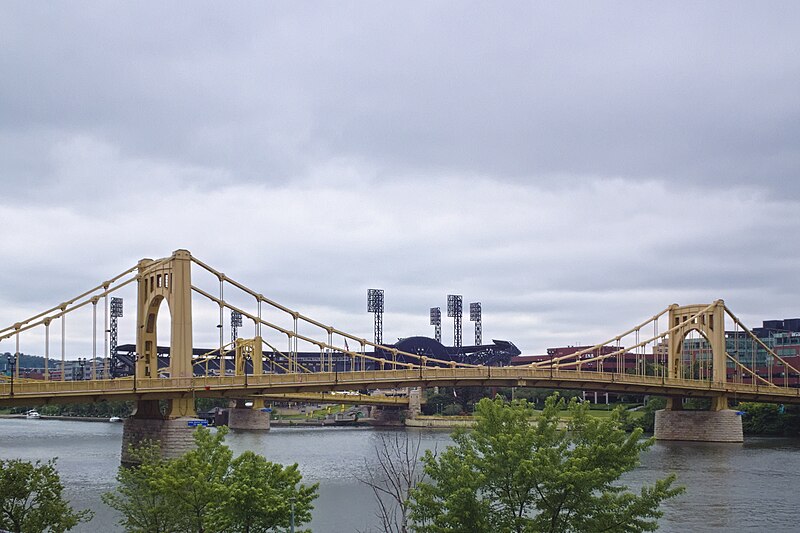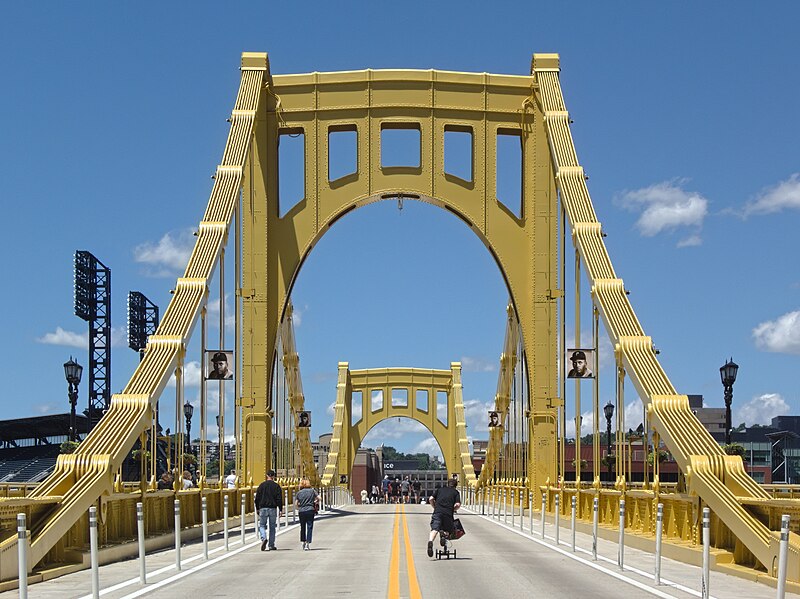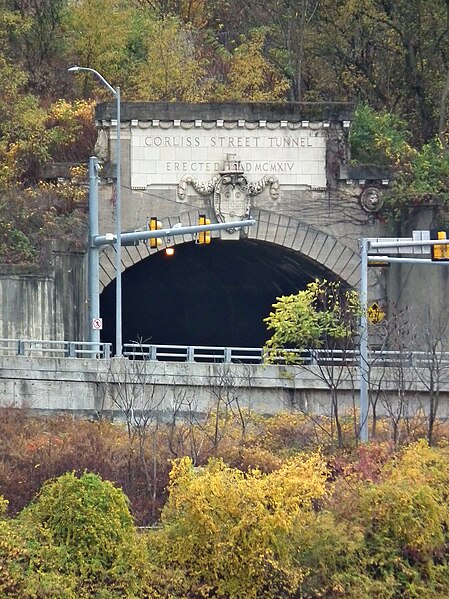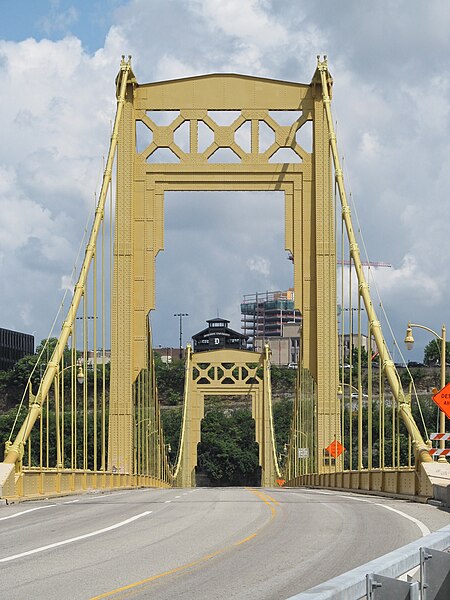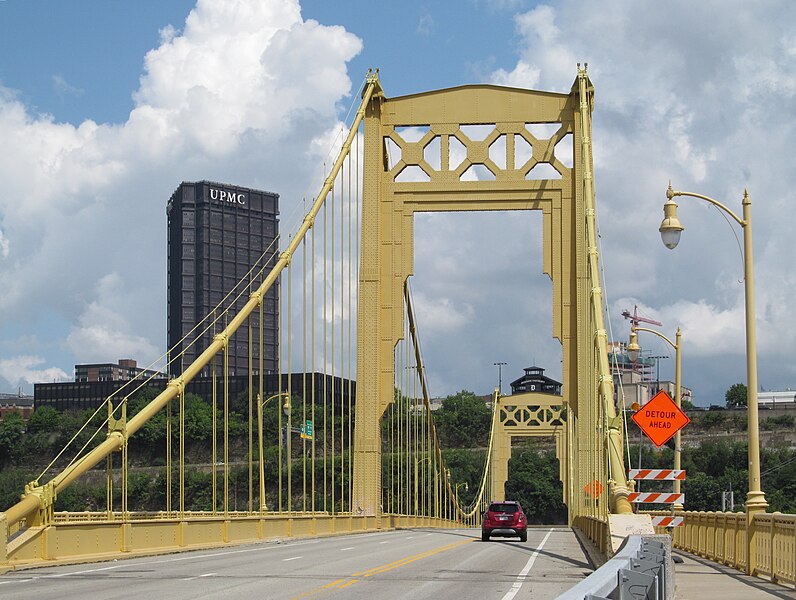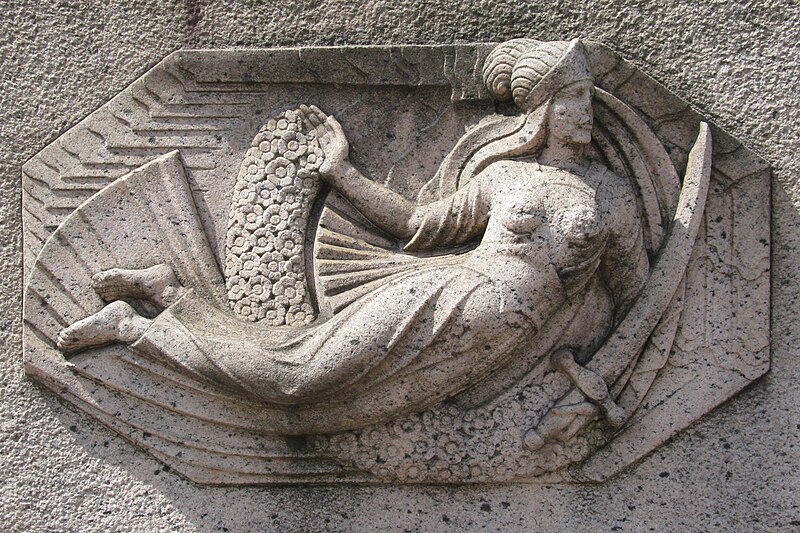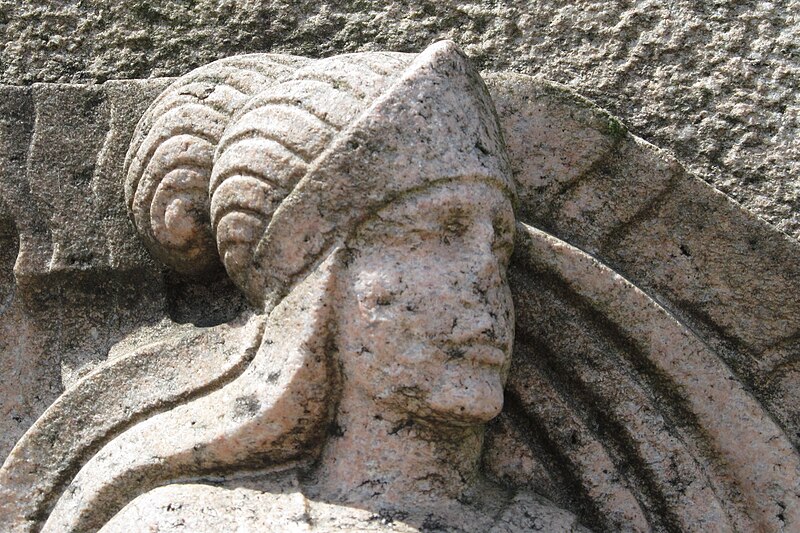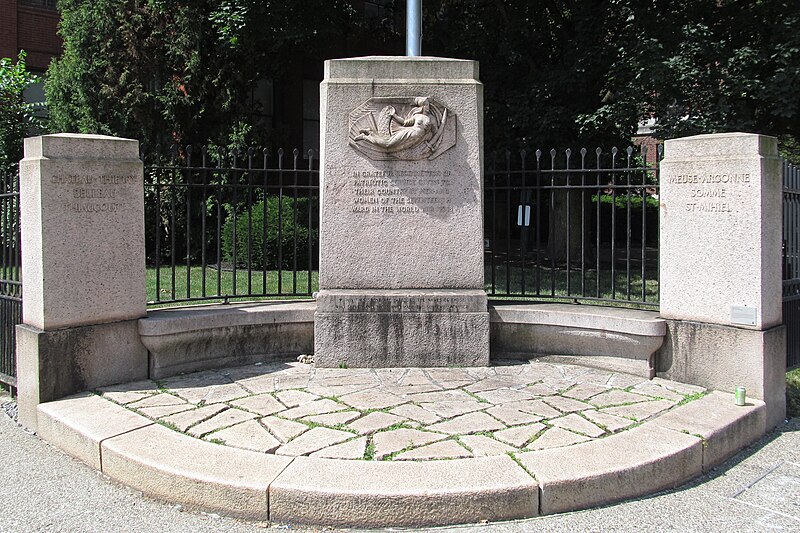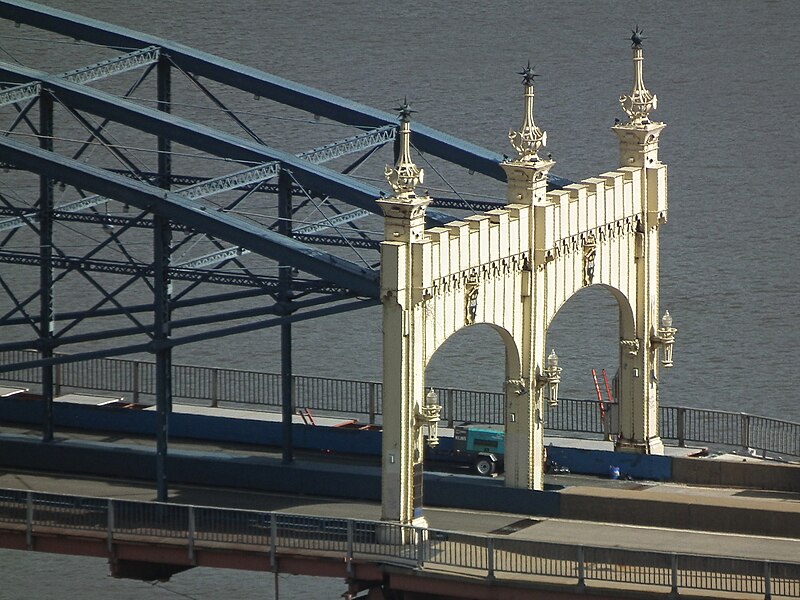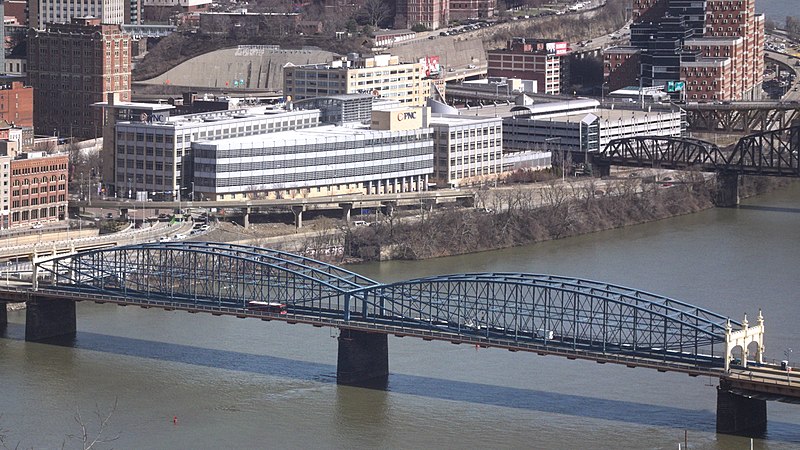
Stanley Roush, the county’s official architect, designed this building to hold the offices that were spilling out of the Courthouse and the City-County Building as Pittsburgh and its neighbors grew rapidly. It was built in 1929–1931, and it is an interesting stylistic bridge between eras. Roush’s taste was very much in the modernistic Art Deco line, but the Romanesque Allegheny County Courthouse, designed by the sainted Henry Hobson Richardson, was a looming presence that still dictated what Allegheny County thought of its own architectural style. Roush’s compromise is almost unique: Art Deco Romanesque. We have many buildings where classical details are given a Deco spin—a style that, when applied to public buildings, old Pa Pitt likes to call American Fascist. But here the details are streamlined versions of medieval Romanesque, right down to gargoyles on the corners. Above, the Ross Street side of the building; below, the Forbes Avenue side.


One of the entrances on Forbes Avenue.




Moses with the tablets of the Law. His beard obscures the Tenth Commandment, so go ahead and covet anything you like, except—if you are Lutheran—your neighbor’s house, or—if you are Catholic—your neighbor’s wife or house. Counting up to ten is harder than it looks when it comes to Commandments, and you may need to refer to Wikipedia’s handy chart to find how the numbering works in your religious tradition.

The bridge in this medallion looks a lot like the Tenth Street Bridge, which by pure coincidence was designed by Stanley Roush.

Decorative grate with an Allegheny County monogram.

Some very expensive columns, smooth and classically proportioned but with elaborate Deco Romanesque capitals.
We have more pictures of the decorations on the County Office Building, including those gargoyles we mentioned.
Comments

